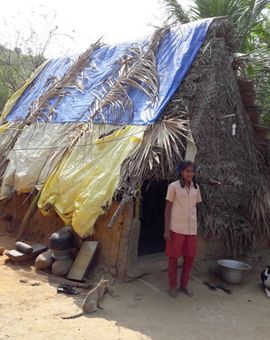DISASTER RESPONSE

Can any disaster avoid a sight of children lying lifeless, injured and deafening sound of their cry in pain and stream of tears rolling relentlessly? The huge impact of disasters on children is visible with the staggering number of deaths and injuries to children. Children’s vulnerability increases with the decrease in age and existing ill-health conditions. Among lives lost in disasters, at least one out of three is a child below 18 years.
Children are the worst affected during disasters due to physical, psychological and social vulnerabilities. The major impact remains due to physical vulnerability as children bear the brunt of shock due to any disaster. Be it natural disasters like flood, earthquake, cyclone, heat and cold wave or man-made disasters like Fire, epidemic, civil strife etc. children are the worst sufferers as they are doubly hit. Firstly, at the time of disaster, due to inability to escape or fend for themselves especially for very young children at high risk of injury. Secondly, post disaster due to separation or loss of their families and their homes.
They are psychologically vulnerable due to their tender age and little experience of disaster situation. Children show high level of post-traumatic stress disorder for which there are several reasons such as shock due to chaos and panic caused in the neighbourhood during disasters, seeing their loved ones dying or getting injured, damage to their houses, losing their belongings, having to live with hunger and thirst, self-injury, separation from their parents and siblings.
Children unable to the cope with post-traumatic stress show certain symptoms- becoming quiet, loss of appetite, continuous sobbing, revisiting the episode, loss of sleep, anxiety, depression etc. Longer lasting impact of traumatic conditions on their personality with episodes of violent behavior.
The social vulnerability is due to role of children specified in the society which is low in terms of gaining of information/experience on disaster or coping with them. Activation of anti-social elements during disasters which leads to exploitation, abuse and trafficking of children. The loss of support system puts the children at risk as they roam around unattended. Eg. Post floods, there are number of drowning cases of children as they play in flood waters.
Be it physical, psychological or social, vulnerability, it surmounts the disaster risk on children which is further aggravated due to intensity of disaster and low coping capacity.
The Cyclonic storm ‘Vardah’ with wind speed of 120kmph impacted Chennai and its neighbouring coastal districts of Thiruvallur and Kancheepuram in Tamil Nadu on 12th December, 2016. Reports indicated that 400,000 people had been displaced by the floods which caused over $1 billion of damage. Due to the severity of cyclonic storm lakhs of trees uprooted, damaged electric poles & transformers, water connections were disrupted, damaged agricultural crops, houses with thatched roofs collapsed & houses with asbestos roofs were badly damaged.
In Kanchipuram district, out of 633 Gram Panchayats, 265 GPs are reported to be severely affected. District level data suggests that approximately 7000 Houses that have been affected – sustaining either partial or total damage- (507 fully damaged, 6610 partially damaged). Nearly 18,121 trees and 8330 electrical poles, 130 Transformers and 27 Electrical Tower Lines have been uprooted or damaged.
The aforesaid disaster situations had a major impact on children, fear while recalling the incidentrs specifically of the recent cyclone. Children thinking, they would not live to see another day. I was so afraid and kept praying to God , why this wind save us” (Revari, Class VII Student, Orgadam Village, Kanchipuram District, Tamil Nadu). I was scared as I had never experienced such wind speed, but thank God all of us survived, I will gain knowledge and help children to be better prepared in case of such disaster. (Ashok Kumar, Class VII student, Ambedkar Nagar Village, Kanchipuram District, Tamil Nadu)
The disaster risks can be minimized by building a safety net for children so that they are protected and can cope better in a disaster situation. There is a need to understand the risks faced by children in the community. The village disaster management plans need to prioritize children in terms of rescue or evacuation in a disaster situation. School safety becomes an important issue as children spend a considerable amount of time in schools. Children are quick learners and thus need to be involved in all exercises for school safety. Thus, it is important to identify hazards in school premises involving children and develop a school disaster management plan including regular mock drills and training on first aid. There is a strong need for interventions post disasters such as counselling, recreational facilities, children food, nutrition supplements, education materials etc.
During a training program for school children being conducted by me, I had once asked the children to share some of the losses due to a disaster, to which I got a unique response of a child- She mentioned- ‘A number of young minds are lost in a disaster’. I echo that response and there is a need for concrete actions to protect children from disasters in the near future.




